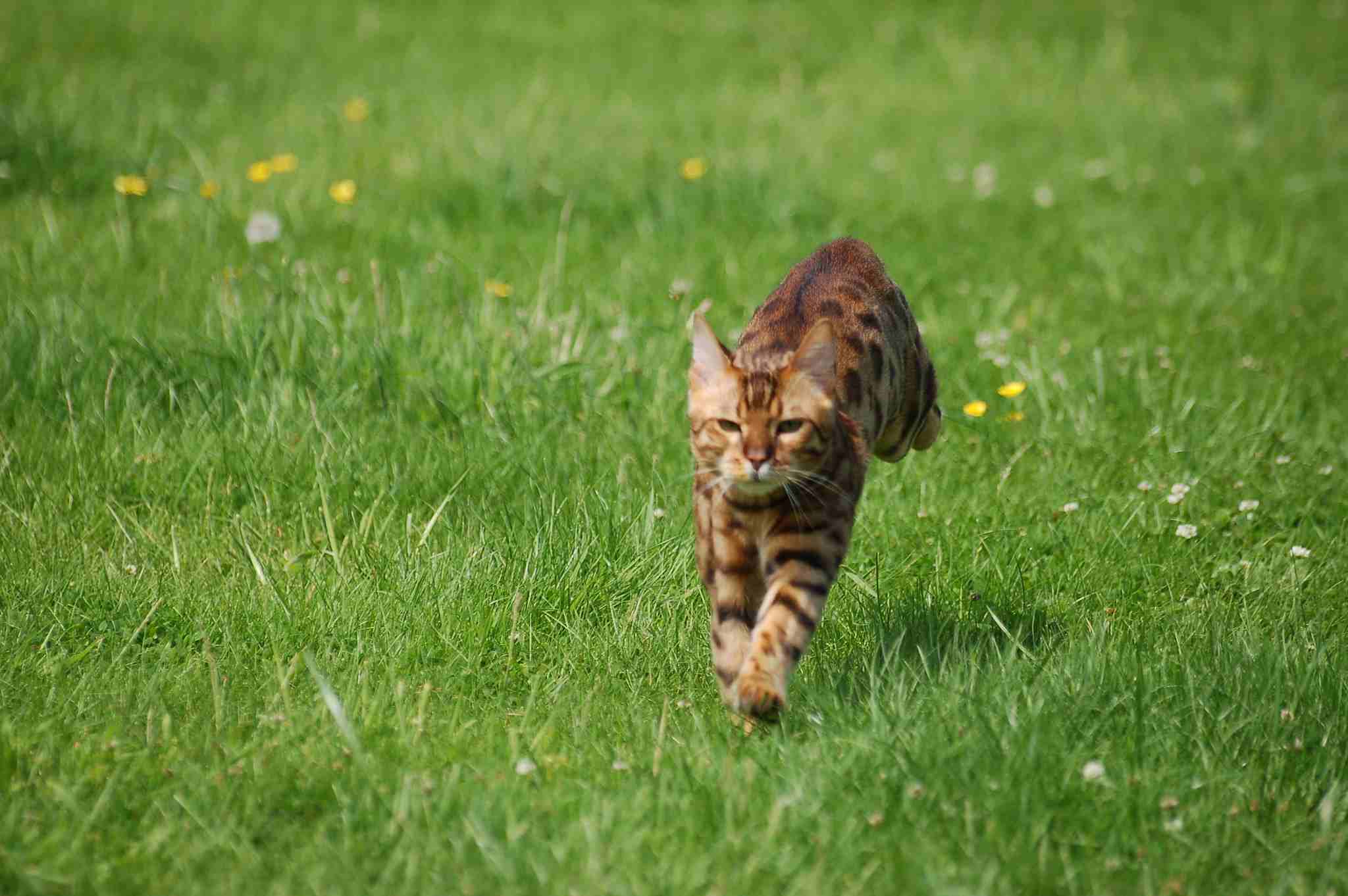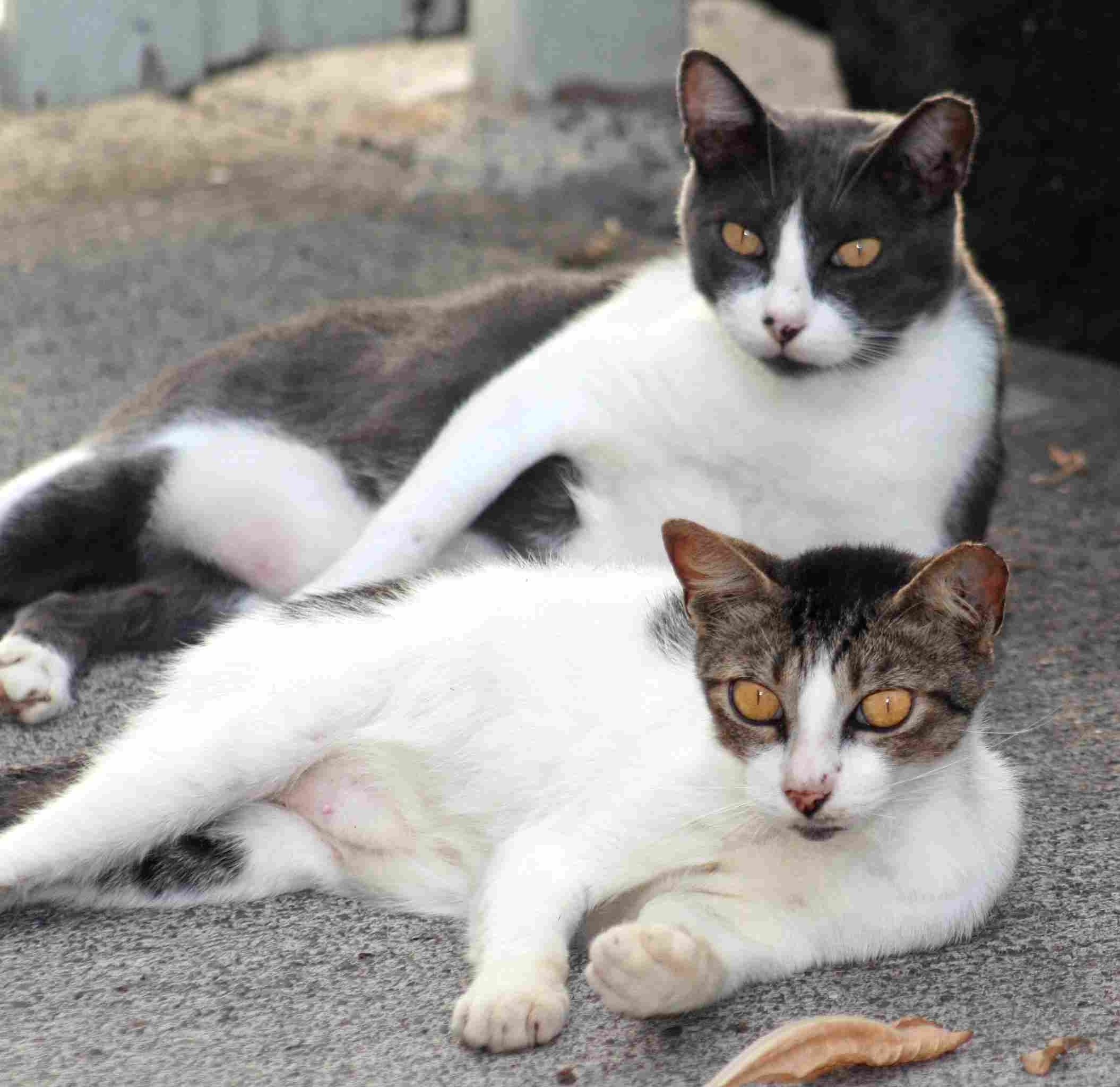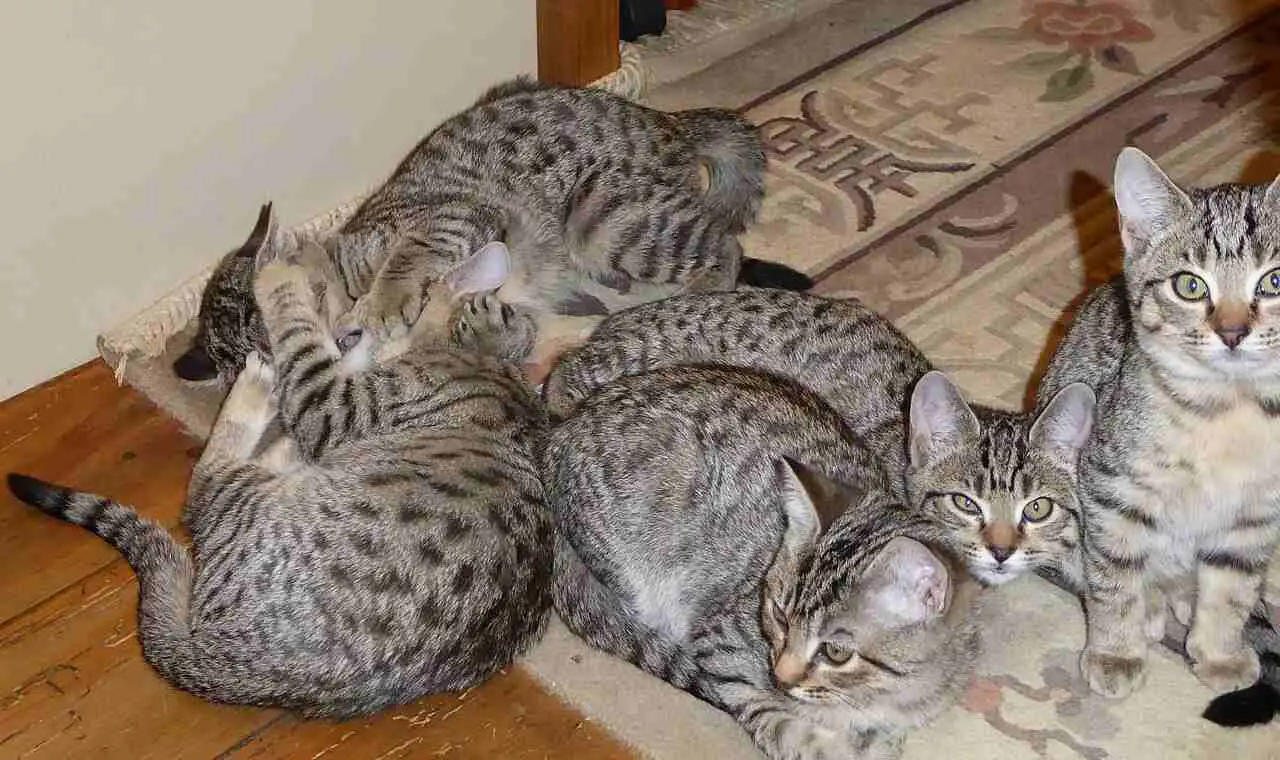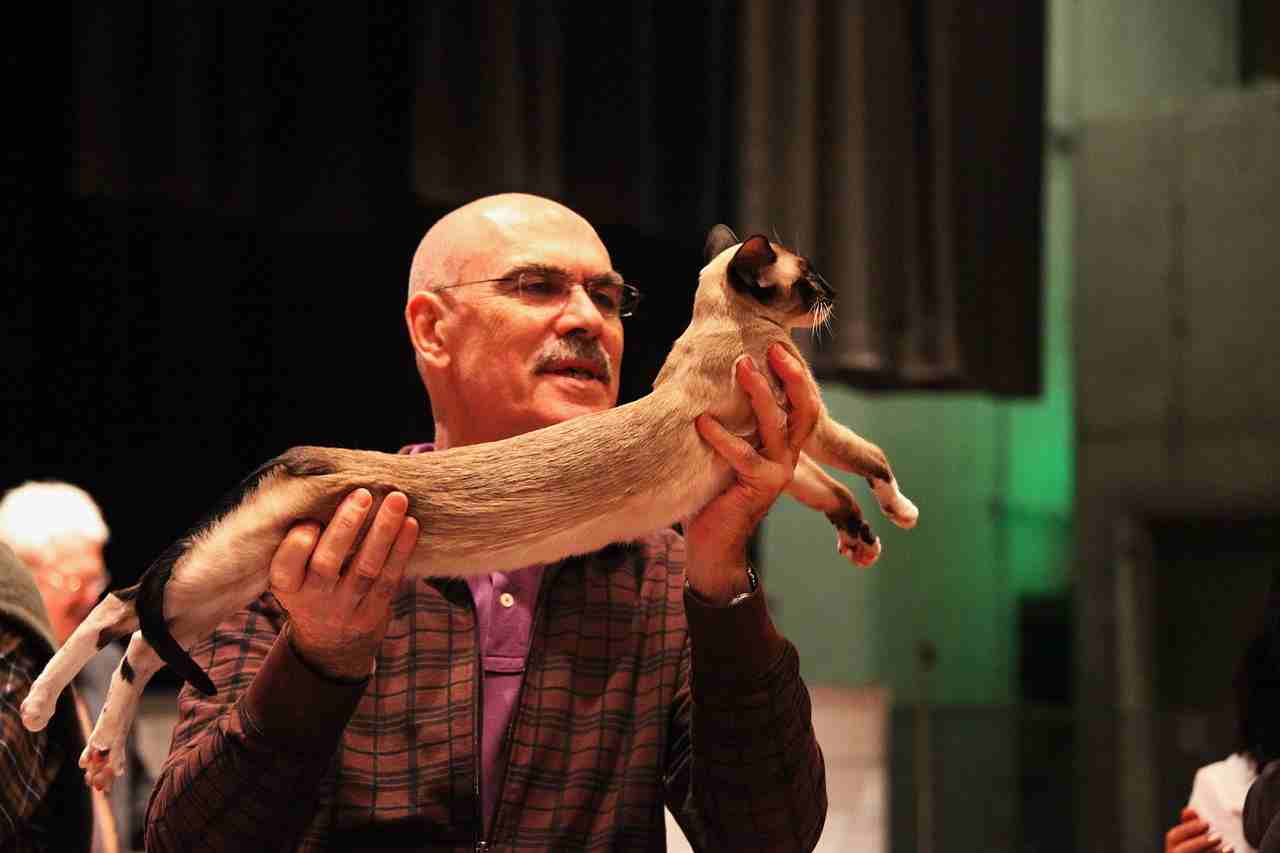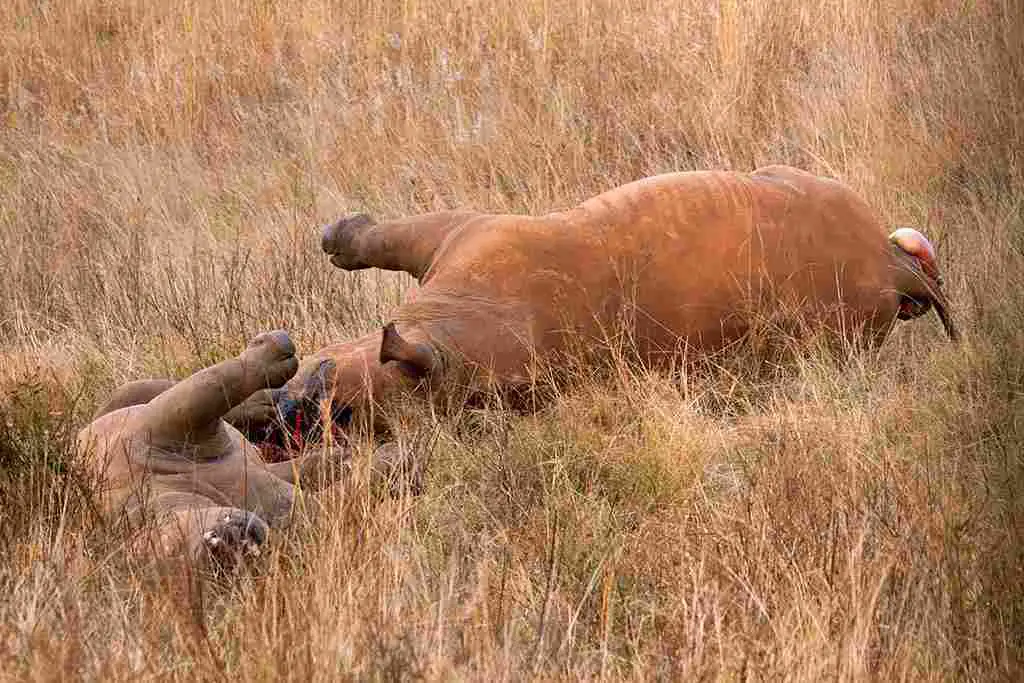Savannah Cat Vs Serval Size, Weight, Overall Comparison
Savannah cats differ from savanna cats by being their domestic derivatives or offspring, while serval cats are wild cats native to Africa, being larger and more predatory than savannah cats.
Comparing the majestic Savannah cat with its wild relative, the Serval, reveals a fascinating juxtaposition of domestication and untamed allure. While their similarities may confuse onlookers, the nuanced distinctions between these two feline companions highlight the complex dynamics within the world of hybrid and wild cats.
I. Origin and Evolution:
– The Serval cat, native to Africa, stands as a wild species with untamed origins. In contrast, the Savannah cat is a domestic hybrid resulting from the crossbreeding of a domestic cat and a Serval, spanning generations of evolution to achieve a distinctive domestic-wild blend.
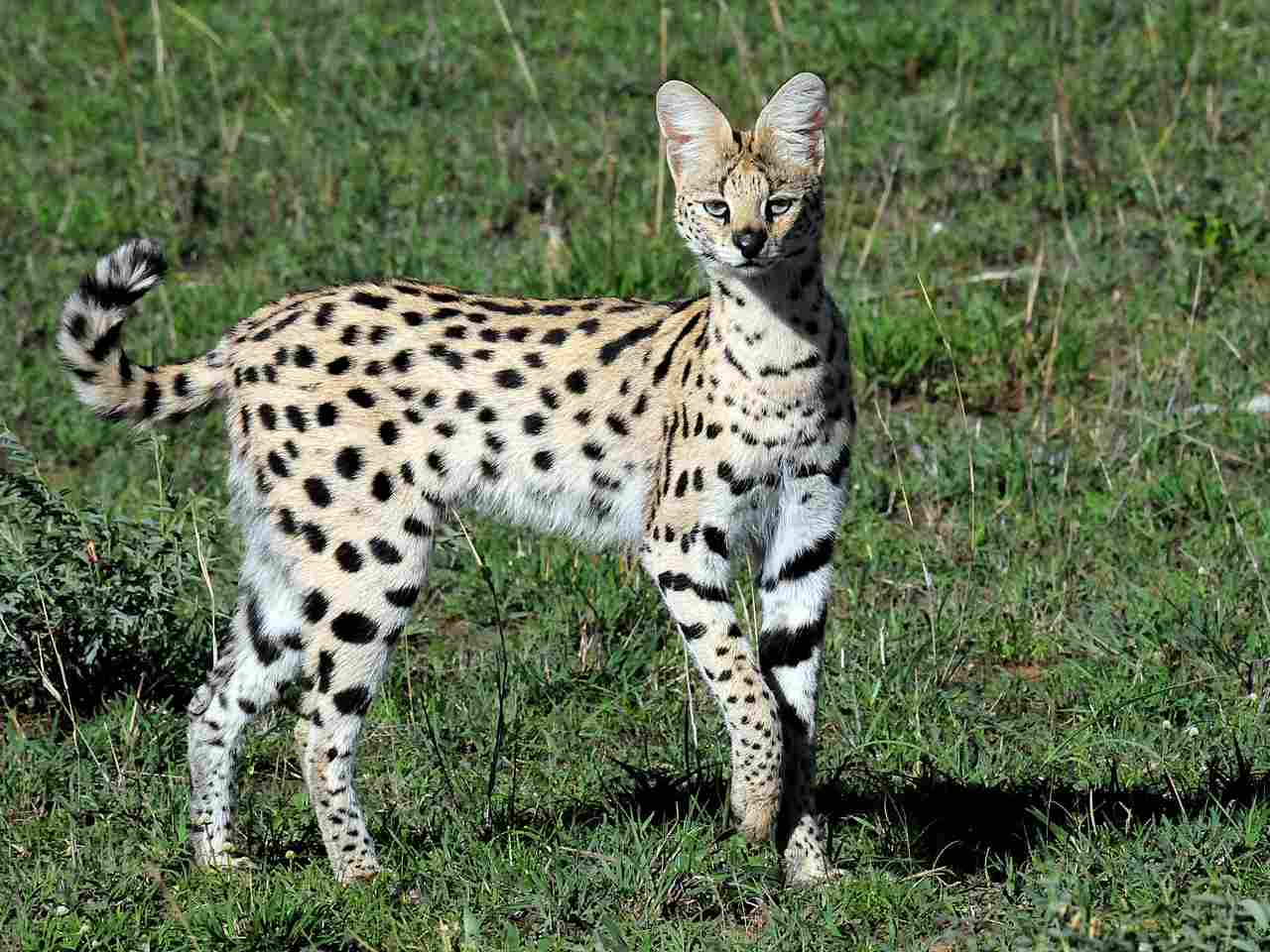
II. Cost Disparities:
– The Serval cat, being a wild and exotic species, commands a significantly higher price compared to the Savannah cat. The cost of a Savannah cat increases with the percentage of Serval genes it possesses, reflecting the wild ancestry within its lineage.
III. Dietary Demands:
– Serval cats, being wild, require a carnivorous diet predominantly consisting of raw meat. This dietary demand, coupled with the need for more space and attention, makes them more expensive and challenging to maintain compared to the relatively adaptable Savannah cat.
IV. Size and Weight:
– Notably, Serval cats are larger and heavier than Savannah cats, a testament to their wild origins. This size difference can play a crucial role in their interactions, particularly in multi-pet households.
V. Predatory Instincts:
– The wild predatory instincts inherent in Serval cats may pose a risk to Savannah cats, especially in confrontations where the larger and more powerful Serval could potentially overpower and harm their domestic counterparts.
VI. Generational Evolution:
– The distinction between Savannah and Serval cats lies not only in their appearance but also in the generational gap that defines their evolution. While the Savannah cat bridges the gap between domestication and wild heritage, the Serval cat remains a true reflection of the untamed beauty of African wildlife.
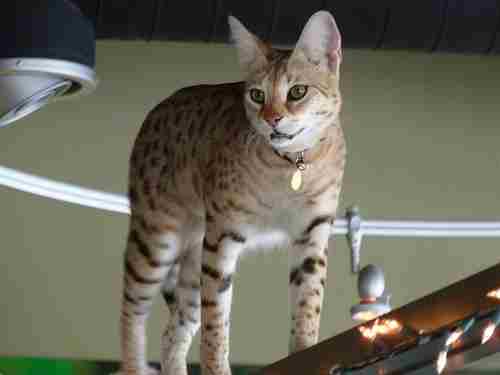
VII. Responsible Ownership:
– Prospective cat owners must carefully consider the responsibilities and challenges associated with both Savannah and Serval cats, recognizing the unique needs and characteristics that come with each, ensuring a harmonious coexistence within a domestic setting.
*Details of Comparison
| Criteria | Savannah Cat | Serval |
| Taxonomy | Felis catus × Leptailurus serval |
Leptailurus serval
|
| Appearance | Resembles wildcat with varied coat colors |
Unique coat with distinctive spots and stripes
|
| Size | Generally smaller | Larger |
| Weight | 8 to 20 pounds (varies) |
20 to 40 pounds (males), 15 to 26 pounds (females)
|
| Bite Force (PSI) | 150 to 300 PSI |
170 to 500 PSI
|
| Physical Offensive Advantages | Agility and quickness |
Agility, strong bite force
|
| Physical Defensive Advantages | Sharp claws, quick reflexes |
Elusiveness, keen senses
|
| Speed | Up to 30 mph | Up to 50 mph |
| Agility | Highly agile |
Exceptional agility
|
| Senses | Keen hearing, night vision |
Exceptional hearing, eyesight
|
| Overall Physical Capacity | Hybrid features, adaptable |
Specialized for wild habitat
|
| Habitat Preference(s) | Adaptable, including households |
Wild habitats with dense vegetation
|
| Tracks | Resemble domestic cats, serval traits |
Distinctive with three lobes at the base
|
| Lifespan | 12 to 20 years (varies) |
10 to 12 years (wild)
|
| Mode of Feeding | Carnivorous, may include commercial diet |
Strictly carnivorous, hunting in the wild
|
| Intelligence | High, problem-solving abilities |
Wild instincts for survival
|
| Social Behavior | Sociable, bonds with humans |
Solitary in the wild
|
| Mode of Reproduction | Domestic cat mechanisms |
Typical felid reproductive behavior
|
| Parental Behavior | Nurturing, influenced by domestication |
Maternal instincts for offspring survival
|
| Proximity to Human-Inhabited Areas | Adaptable to households |
Generally avoids human settlements
|
| Behavior Toward Humans | Friendly and sociable |
Wary of humans, more cautious
|
| Danger Posed to Humans | Minimal danger |
Generally not a significant threat
|
| Associated Precautions | Regular veterinary care, secure enclosure |
Strict precautions due to wild instincts
|
| Conservation Status | Not considered wild, no conservation status |
“Least Concern” on the IUCN Red List
|
Key Points
- Savannah cats are generally smaller, have lower bite forces, and are more adaptable to human-inhabited areas.
- Servals are larger, have a stronger bite force, and are more specialized for life in the wild.
- Both share carnivorous diets, reproductive behaviors, and minimal danger to humans.
- Savannah cats exhibit more domesticated traits, while servals maintain wild instincts.
- Differences extend to size, weight, physical capabilities, habitat preferences, and conservation status.
1. Taxonomy:
Savannah Cat:
Kingdom: Animalia
Phylum: Chordata
Subphylum: Vertebrata
Class: Mammalia
Order: Carnivora
Family: Felidae
Genus: Felis
Species: F. catus (domestic cat) × serval (Leptailurus serval)
Serval:
Kingdom: Animalia
Phylum: Chordata
Subphylum: Vertebrata
Class: Mammalia
Order: Carnivora
Family: Felidae
Genus: Leptailurus
Species: L. serval
2. Appearance:
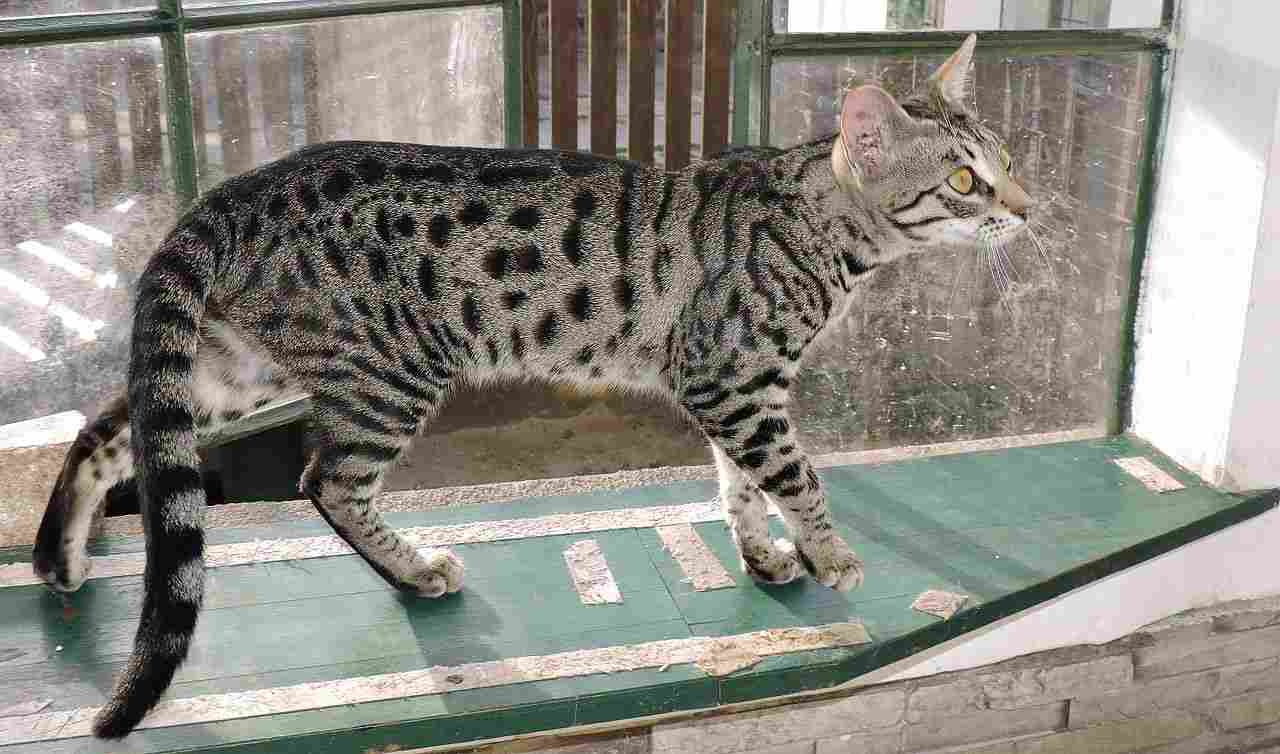
Savannah Cat:
Exhibits a striking resemblance to a small-sized wildcat.
Long legs, large ears, and a slender body.
Distinctive spotted or marbled coat patterns, resembling those of a serval.
Various coat colors, including silver, smoke, and brown.
Serval:
Characterized by a slender, medium-sized build.
Ears are large and rounded.
Unique coat with a distinctive pattern of bold spots and stripes.
Coat color ranges from pale yellow to orange-brown, with a white underbelly.
Comparison:
Both share similar physical characteristics, such as long legs and distinctive coat patterns.
Savannah cats may have a more varied color range due to their hybrid nature.
Ecological Implications:
The distinctive appearance of both species makes them attractive in the exotic pet trade, raising concerns about their impact on wild populations and ecosystems.
3. Size:
Savannah Cat:
Generally smaller than a serval, with variations depending on the generation of hybridization.
Adult sizes typically range from 8 to 20 pounds.
Serval:
Medium-sized wild cat, with a body length of about 2.5 to 3.5 feet and a shoulder height of 20 to 26 inches.
Males are generally larger than females.
Comparison:
Servals are larger in size compared to most Savannah cats.
Size variations in Savannah cats depend on the percentage of serval in their ancestry.
Ecological Implications:
Size influences the ecological niche and prey selection, with larger species potentially impacting local ecosystems differently.
4. Weight:
Savannah Cat:
Weights vary based on generation, with F1 (first generation) Savannahs being larger.
Adult weights range from 8 to 20 pounds.
Serval:
Adult males weigh between 20 to 40 pounds, while females weigh between 15 to 26 pounds.
Comparison:
Servals are generally heavier than Savannah cats.
Weight variations in Savannah cats are influenced by their generational hybridization.
Ecological Implications:
Weight influences the energy requirements and ecological roles within their respective habitats.
5. Bite Force (PSI – Pounds per Square Inch):
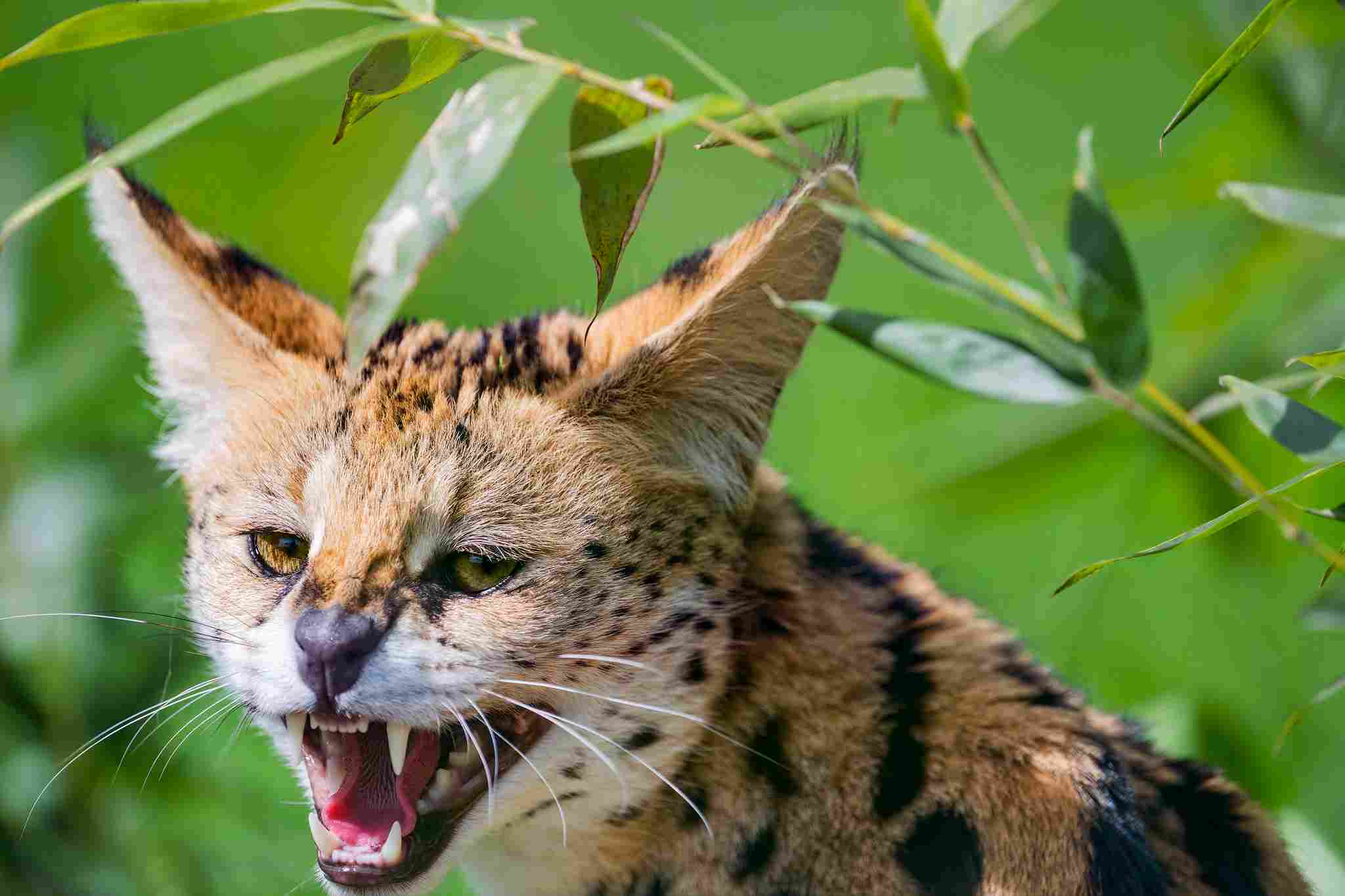
Savannah Cat:
Typically, domestic cat bite forces range from 150 to 300 PSI.
Serval:
Estimated to have a bite force around 170-500 PSI, which is relatively powerful for a small-sized cat.
Comparison:
Servals have a significantly stronger bite force compared to Savannah cats.
Domestic cat bite forces are comparatively lower.
Ecological Implications:
Bite force affects the hunting techniques and prey preferences, potentially impacting the population dynamics of local prey species.
6. Physical Offensive Advantages:
Savannah Cat:
Agile and quick, capable of leaping to catch prey.
Utilizes its speed and dexterity for hunting.
Serval:
Exceptional leaping abilities, often capable of catching birds in mid-air.
Sharp retractable claws and powerful jaws contribute to effective hunting.
Comparison:
Both possess physical offensive advantages, with the serval’s stronger bite force providing an additional advantage.
Savannah cats may leverage their hybrid vigor for enhanced agility.
Ecological Implications:
Hunting prowess affects the prey-predator dynamics in their respective ecosystems.
7. Physical Defensive Advantages:
Savannah Cat:
Sharp retractable claws for climbing and self-defense.
Quick reflexes to evade potential threats.
Serval:
Agile and elusive, capable of escaping from larger predators.
Well-developed senses, including keen hearing and sight.
Comparison:
Both exhibit defensive adaptations, with the serval’s larger size providing some advantage.
Savannah cats may rely on their domestic cat traits for quick evasion.
Ecological Implications:
Defensive abilities influence survival rates and interactions within their ecosystems.
8. Speed (Km/hour or Mile/hour):
Savannah Cat:
Can reach speeds of 30 mph (48 km/h).
Serval:
Capable of running at speeds up to 50 mph (80 km/h).
Comparison:
Servals are generally faster runners compared to Savannah cats.
Savannah cats inherit some speed traits from domestic cats.
Ecological Implications:
Speed affects hunting success and evasion of predators in their natural habitats.
9. Agility:
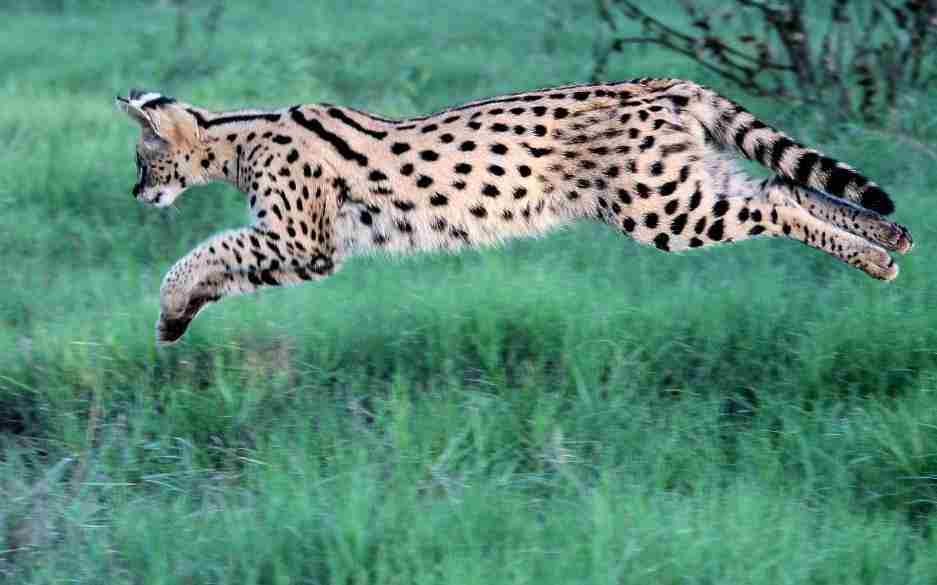
Savannah Cat:
Highly agile, capable of navigating various terrains with ease.
Displays grace and flexibility in movements.
Serval:
Exhibits exceptional agility, crucial for hunting in dense vegetation.
Can make sharp turns and sudden leaps to catch agile prey.
Comparison:
Both species display high levels of agility, adapted to their specific habitats.
Savannah cats may inherit agility from domestic cat ancestry.
Ecological Implications:
Agility contributes to effective hunting strategies and survival in diverse environments.
10. Senses:
Savannah Cat:
Possesses keen senses of hearing and sight.
Well-developed night vision for low-light hunting.
Serval:
Exceptional sense of hearing to locate prey.
Excellent eyesight aids in detecting movement from a distance.
Comparison:
Both species have heightened senses, with servals known for acute hearing and sight.
Domestic cat traits contribute to the sensory abilities of Savannah cats.
Ecological Implications:
Sharp senses are crucial for hunting success and predator avoidance in their natural habitats.
11. Overall Physical Capacity:
Savannah Cat:
Exhibits a balance of domestic cat traits and serval features.
Varies based on the generation of hybridization.
Serval:
Well-adapted to its natural environment with a robust build.
Specialized features for effective hunting and survival.
Comparison:
Servals generally have a more specialized physical capacity for their natural habitat.
Savannah cats exhibit a blend of domestic and wildcat features.
Ecological Implications:
Overall physical capacity influences the ecological roles each species plays in their respective ecosystems.
12. Habitat Preference(s):
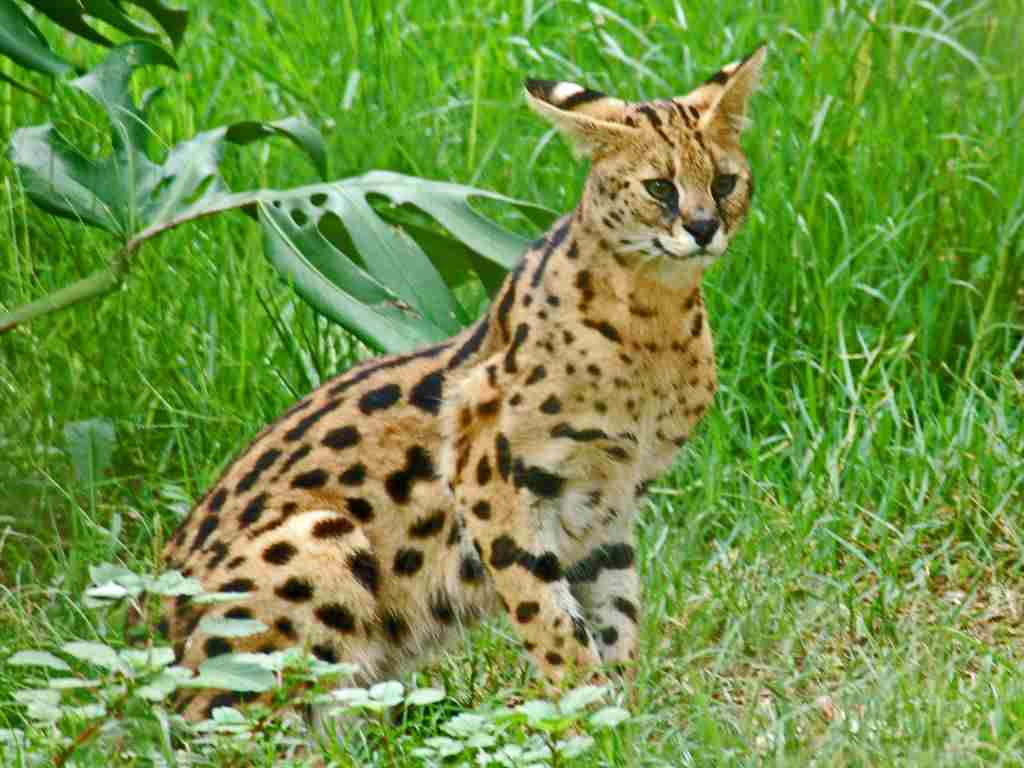
Savannah Cat:
Adaptable to various environments, including households.
Prefers spaces with vertical elements for climbing.
Serval:
Native to grasslands, savannas, and wooded areas near water sources.
Thrives in habitats with dense vegetation for cover.
Comparison:
Savannah cats can adapt to domestic settings, while servals are specialized for specific wild habitats.
Hybrid traits in Savannah cats may influence habitat preferences.
Ecological Implications:
Habitat preferences impact the potential range and interactions with other species in the ecosystem.
13. Tracks:
Savannah Cat:
Paw prints resemble those of domestic cats, often with variations in size depending on the hybrid generation.
Serval:
Distinctive tracks featuring three lobes at the base, resembling a small cheetah print.
Comparison:
Servals have more distinctive tracks due to their unique foot structure.
Savannah cat tracks may show a mix of domestic cat and serval characteristics.
Ecological Implications:
Tracking can aid in identifying the presence of these species in the wild, helping researchers monitor populations and behaviors.
14. Lifespan:
Savannah Cat:
Typically has a lifespan of 12 to 20 years, influenced by factors such as genetics and healthcare.
Serval:
In the wild, servals have an average lifespan of around 10 to 12 years.
Comparison:
Savannah cats generally have a longer lifespan compared to servals.
Domestic cat genetics contribute to the extended lifespan of Savannah cats.
Ecological Implications:
Lifespan influences the population dynamics and potential impacts on ecosystems.
15. Mode of Feeding:
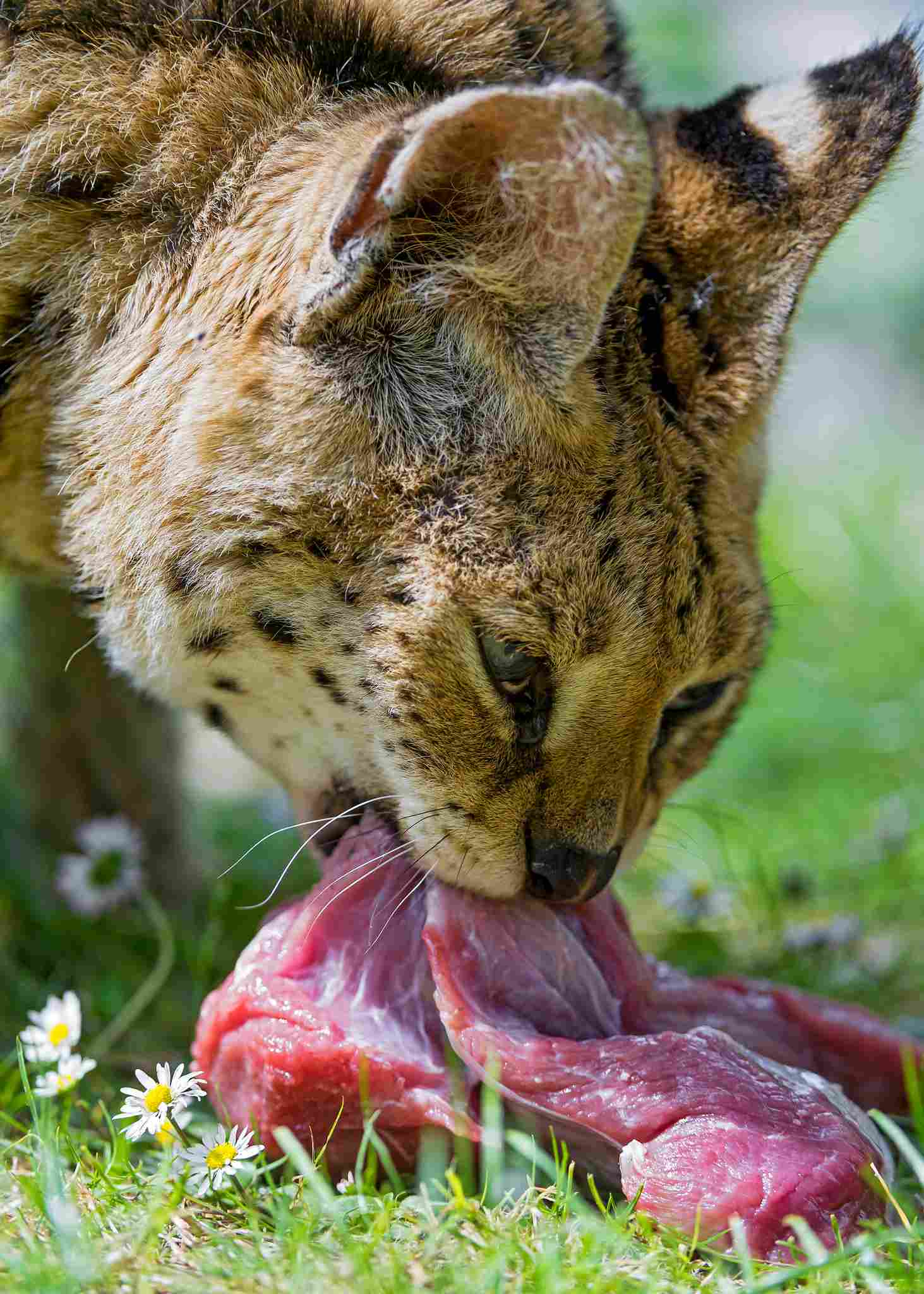
Savannah Cat:
Carnivorous, primarily consuming a diet of meat.
May be fed a balanced commercial cat food diet in domestic settings.
Serval:
Strictly carnivorous, hunting small mammals, birds, and insects in the wild.
Comparison:
Both species share a similar carnivorous diet, reflecting their common feline ancestry.
Domestication allows Savannah cats to be fed commercial diets, while servals rely on hunting skills.
Ecological Implications:
Dietary habits contribute to the regulation of prey populations in their natural habitats.
16. Intelligence:
Savannah Cat:
Known for high intelligence and problem-solving abilities.
Can learn tricks and may exhibit dog-like behaviors.
Serval:
Exhibits intelligence in hunting strategies and adapting to its environment.
Comparison:
Savannah cats inherit intelligence from both domestic cat and serval ancestry.
Servals display specialized intelligence for surviving in the wild.
Ecological Implications:
Intelligence influences hunting success, adaptability, and overall ecological roles.
17. Social Behavior:
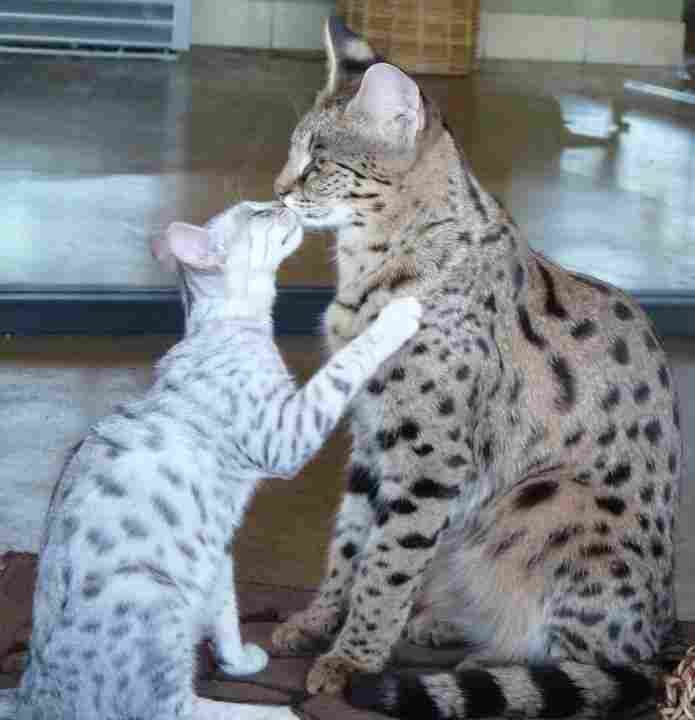
Savannah Cat:
Social and may form strong bonds with their human owners.
Can get along with other pets, including dogs.
Serval:
Solitary in the wild, except during mating and raising offspring.
May be aggressive towards other servals in their territory.
Comparison:
Savannah cats exhibit more social behavior, influenced by domestic cat traits.
Servals are generally solitary, reflecting their wild nature.
Ecological Implications:
Social behaviors impact interactions with other individuals, influencing mating, territoriality, and overall population dynamics.
18. Mode of Reproduction:
Savannah Cat:
Breeds through the same reproductive mechanisms as domestic cats.
Gestation period is around 65 days.
Serval:
Exhibits typical feline reproductive behavior with a gestation period of about 66 to 77 days.
Typically gives birth to a litter of 1 to 4 kittens.
Comparison:
Both species share similar modes of reproduction typical for felids.
Domestic cat genetics influence the reproduction of Savannah cats.
Ecological Implications:
Reproductive patterns impact population dynamics and sustainability in their respective habitats.
19. Parental Behavior:
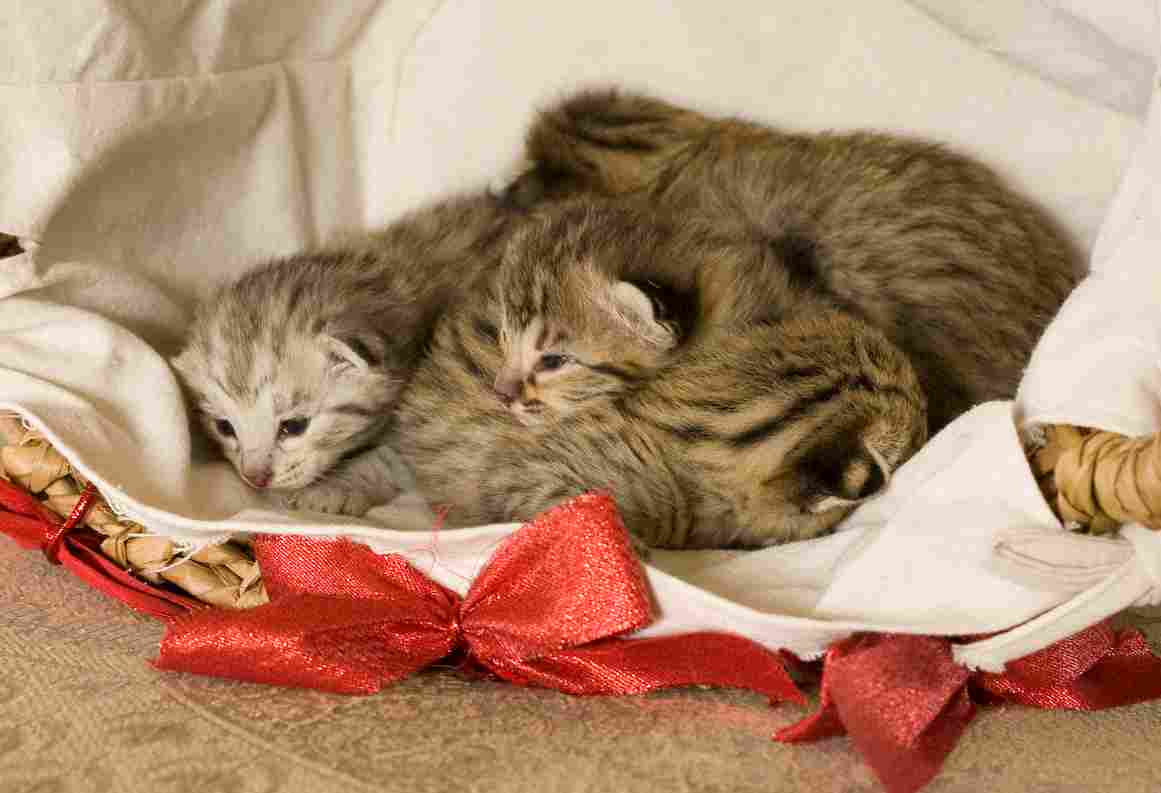
Savannah Cat:
Typically exhibits nurturing behavior towards their kittens.
May show a stronger bond with human owners, reflecting domestication.
Serval:
Female servals are responsible for raising and protecting their offspring.
Displays protective behavior towards the den and territory.
Comparison:
Parental behavior is influenced by both domestic cat and serval instincts in Savannah cats.
Servals exhibit strong maternal instincts for the survival of their offspring.
Ecological Implications:
Parental behavior contributes to the survival and development of the next generation, affecting population dynamics.
20. Proximity to Human-Inhabited Areas:
Savannah Cat:
Domesticated and adapted to living in human households.
Can form strong bonds with human family members.
Serval:
Generally avoids human settlements and prefers wild habitats.
May come into conflict with humans in areas with habitat encroachment.
Comparison:
Savannah cats are more adapted to living in proximity to humans due to domestication.
Servals are more elusive and prefer undisturbed natural environments.
Ecological Implications:
Proximity to human-inhabited areas influences the potential for human-wildlife conflicts and conservation efforts.
21. Behavior Toward Humans:
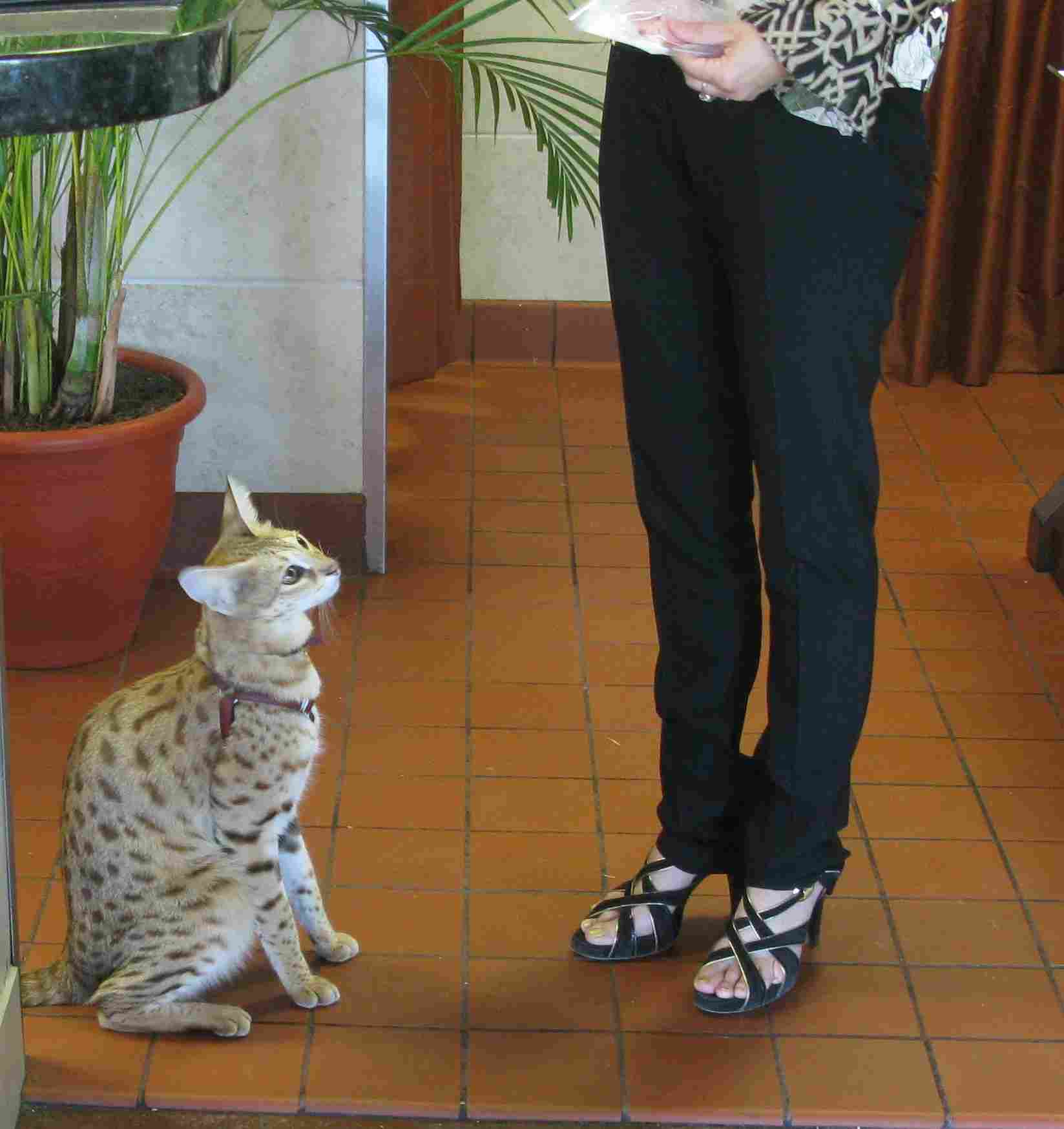
Savannah Cat:
Generally friendly and sociable with human family members.
May seek attention and enjoy interactive play.
Serval:
Wild nature makes servals more wary of humans.
In the wild, they may avoid human presence.
Comparison:
Savannah cats exhibit more domesticated and sociable behavior towards humans.
Servals maintain a more wild and cautious demeanor.
Ecological Implications:
Human interaction and perception impact conservation efforts and the potential for conflicts between these species and humans.
22. Danger Posed to Humans:
Savannah Cat:
Generally poses minimal danger to humans.
May display playful behavior, but aggression is rare.
Serval:
In the wild, servals are not considered a significant threat to humans.
Can be aggressive if cornered or feel threatened.
Comparison:
Both species, in general, are not considered highly dangerous to humans.
Servals may exhibit more defensive aggression due to their wild nature.
Ecological Implications:
Understanding the potential dangers helps in developing safety guidelines for human-wildlife interactions.
23. Associated Precautions:
Savannah Cat:
Regular veterinary care and vaccinations are essential.
May require a secure outdoor enclosure to prevent escape.
Serval:
Strict precautions needed when dealing with captive servals due to their wild instincts.
Appropriate safety measures for interactions in zoos or wildlife sanctuaries.
Comparison:
Both species require responsible ownership and handling practices.
Extra precautions are necessary for servals due to their wild nature.
Ecological Implications:
Responsible ownership helps prevent the unintentional release or harm to these species in domestic or captive settings.
24. Conservation Status:
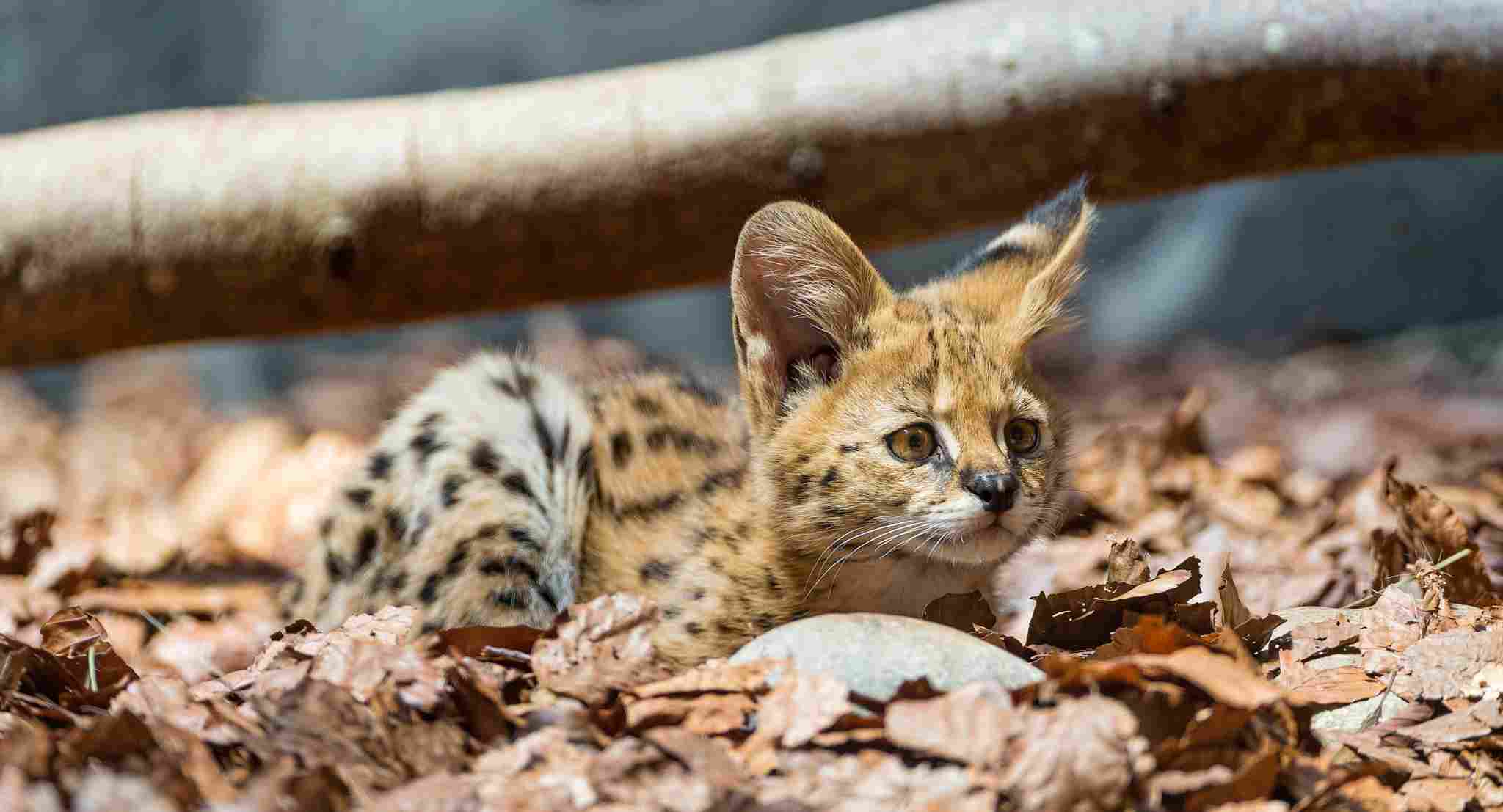
Savannah Cat:
Not considered a wild species; no conservation status.
Governed by domestic cat regulations.
Serval:
Classified as “Least Concern” on the IUCN Red List.
Faces threats such as habitat loss and illegal trade.
Comparison:
Servals have a conservation status reflecting their wild status.
Savannah cats, being domestic hybrids, are not included in wild conservation assessments.
Ecological Implications:
Conservation status reflects the wild population’s health and the need for protective measures.
Summary of Comparison
1. Taxonomy:
Both belong to the family Felidae but differ in genus and species.
2. Appearance:
Both exhibit a wildcat resemblance with unique coat patterns.
Savannah cats may have more varied color ranges.
3. Size:
Servals are generally larger than Savannah cats.
4. Weight:
Servals are heavier compared to Savannah cats.
5. Bite Force (PSI):
Servals have a significantly stronger bite force.
6. Physical Offensive Advantages:
Both possess agility, with servals having a stronger bite force.
7. Physical Defensive Advantages:
Both display defensive adaptations, with servals being larger.
8. Speed:
Servals are faster runners compared to Savannah cats.
9. Agility:
Both exhibit high levels of agility, adapted to their environments.
10. Senses:
Both species have keen senses, with servals having specialized hearing.
11. Overall Physical Capacity:
Servals have a more specialized physical capacity for their natural habitat.
12. Habitat Preference(s):
Savannah cats are adaptable to various environments, including households.
Servals thrive in specific wild habitats.
13. Tracks:
Servals have more distinctive tracks due to their unique foot structure.
14. Lifespan:
Savannah cats generally have a longer lifespan.
15. Mode of Feeding:
Both species share a carnivorous diet, but domestication influences Savannah cats.
16. Intelligence:
Savannah cats inherit intelligence from domestic cats and servals.
17. Social Behavior:
Savannah cats exhibit more social behavior, influenced by domestication.
18. Mode of Reproduction:
Both follow typical felid reproductive mechanisms.
19. Parental Behavior:
Parental behavior is influenced by both domestic cat and serval instincts in Savannah cats.
20. Proximity to Human-Inhabited Areas:
Savannah cats are more adapted to living in proximity to humans.
Servals generally avoid human settlements.
21. Behavior Toward Humans:
Savannah cats exhibit more domesticated and sociable behavior towards humans.
22. Danger Posed to Humans:
Both species generally pose minimal danger to humans.
23. Associated Precautions:
Both require responsible ownership, with extra precautions for servals.
24. Conservation Status:
Servals have a designated conservation status; Savannah cats are not considered wild.
Conclusion:
I. Similarities:
Both share a common family (Felidae) and order (Carnivora).
Exhibit carnivorous diets, typical feline reproductive behaviors, and similar ecological implications.
II. Differences:
Varying sizes, with servals being larger.
Savannah cats show domestication traits and are adapted to living in human households.
Lifespan differences, with Savannah cats generally having a longer lifespan.
Conservation status, with servals having a designated status due to their wild nature.

